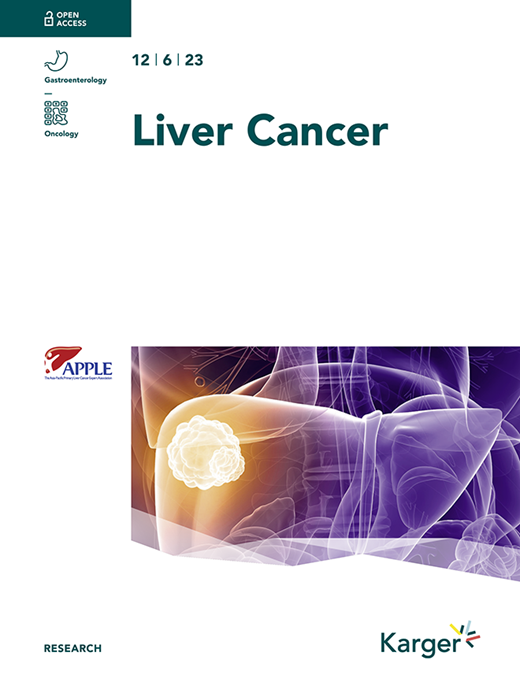Real-world Data on the Diagnosis, Treatment and Management of Hepatocellular Carcinoma in the Asia-Pacific: The INSIGHT study
IF 11.6
1区 医学
Q1 GASTROENTEROLOGY & HEPATOLOGY
引用次数: 0
Abstract
Introduction: Hepatocellular carcinoma (HCC) is the sixth most commonly diagnosed cancer and the third leading cause of cancer death worldwide. While there has been rapid evolution in the treatment paradigm of HCC across the past decade, the extent to which these newly approved therapies are utilized in clinical practice in the real world is, however, unknown. The INSIGHT study was an investigator-initiated, multi-site longitudinal cohort study conducted to reflect real-world epidemiology and clinical practice in Asia-Pacific in the immediate 7-year period after the conclusion of the BRIDGE study. Methods: Data were collected both retrospectively (planned 30% of the total cohort size) and prospectively (planned 70%) from January 2013 to December 2019 from eligible patients newly diagnosed with HCC from 33 participating sites across 9 Asia-Pacific countries. Results: A total of 2,533 newly diagnosed HCC patients (1,052 in retrospective cohort and 1,481 in prospective cohort) were enrolled. The most common risk factor was hepatitis B in all countries except Japan, Australia, and New Zealand, where the prevalence of hepatitis C and diabetes were more common. The top three comorbidities reported in the INSIGHT study include cirrhosis, hypertension, and diabetes. We observe high heterogeneity in the first-line treatment recorded across countries and across disease stages, which significantly affects survival outcomes. Stratification by factors such as etiologies, tumor characteristics, the presence of extrahepatic metastases or macrovascular invasion, and the use of subsequent lines of treatment were performed. Conclusion: The INSIGHT study describes a wide spectrum of clinical management practices in HCC, where patient demographics, differential costs, and patient access to therapies may lead to wide geographical variations through the patient’s treatment cycle, from diagnosis to clinical outcome. The high heterogeneity in patient outcomes demonstrates the need for more robust and clinical management strategies to be designed and adopted to bring about better patient outcomes.亚太地区肝细胞癌的诊断、治疗和管理的真实数据:INSIGHT研究
& lt; b> & lt; i>简介:& lt; / i> & lt; / b>肝细胞癌(HCC)是全球第六大最常诊断的癌症,也是导致癌症死亡的第三大原因。虽然在过去的十年中,HCC的治疗模式有了快速的发展,但这些新批准的治疗方法在现实世界的临床实践中的应用程度尚不清楚。INSIGHT研究是一项由研究者发起的多地点纵向队列研究,旨在反映BRIDGE研究结束后亚太地区7年内的真实流行病学和临床实践。& lt; b> & lt; i>方法:& lt; / i> & lt; / b>从2013年1月至2019年12月,回顾性(计划占总队列规模的30%)和前瞻性(计划占70%)收集了来自9个亚太国家33个参与地点的新诊断为HCC的符合条件的患者的数据。& lt; b> & lt; i>结果:& lt; / i> & lt; / b>共纳入2533例新诊断的HCC患者(1052例为回顾性队列,1481例为前瞻性队列)。除日本、澳大利亚和新西兰外,所有国家最常见的危险因素是乙型肝炎,在这些国家,丙型肝炎和糖尿病的患病率更为普遍。INSIGHT研究报告的前三大合并症包括肝硬化、高血压和糖尿病。我们观察到不同国家和不同疾病阶段记录的一线治疗的高度异质性,这显著影响生存结果。根据病因、肿瘤特征、肝外转移或大血管侵犯的存在以及后续治疗的使用等因素进行分层。& lt; b> & lt; i>结论:& lt; / i> & lt; / b>INSIGHT研究描述了HCC的广泛临床管理实践,其中患者人口统计学,差异成本和患者获得治疗的机会可能导致患者从诊断到临床结果的整个治疗周期中存在广泛的地理差异。患者预后的高度异质性表明,需要设计和采用更稳健的临床管理策略,以带来更好的患者预后。
本文章由计算机程序翻译,如有差异,请以英文原文为准。
求助全文
约1分钟内获得全文
求助全文
来源期刊

Liver Cancer
Medicine-Oncology
CiteScore
20.80
自引率
7.20%
发文量
53
审稿时长
16 weeks
期刊介绍:
Liver Cancer is a journal that serves the international community of researchers and clinicians by providing a platform for research results related to the causes, mechanisms, and therapy of liver cancer. It focuses on molecular carcinogenesis, prevention, surveillance, diagnosis, and treatment, including molecular targeted therapy. The journal publishes clinical and translational research in the field of liver cancer in both humans and experimental models. It publishes original and review articles and has an Impact Factor of 13.8. The journal is indexed and abstracted in various platforms including PubMed, PubMed Central, Web of Science, Science Citation Index, Science Citation Index Expanded, Google Scholar, DOAJ, Chemical Abstracts Service, Scopus, Embase, Pathway Studio, and WorldCat.
 求助内容:
求助内容: 应助结果提醒方式:
应助结果提醒方式:


